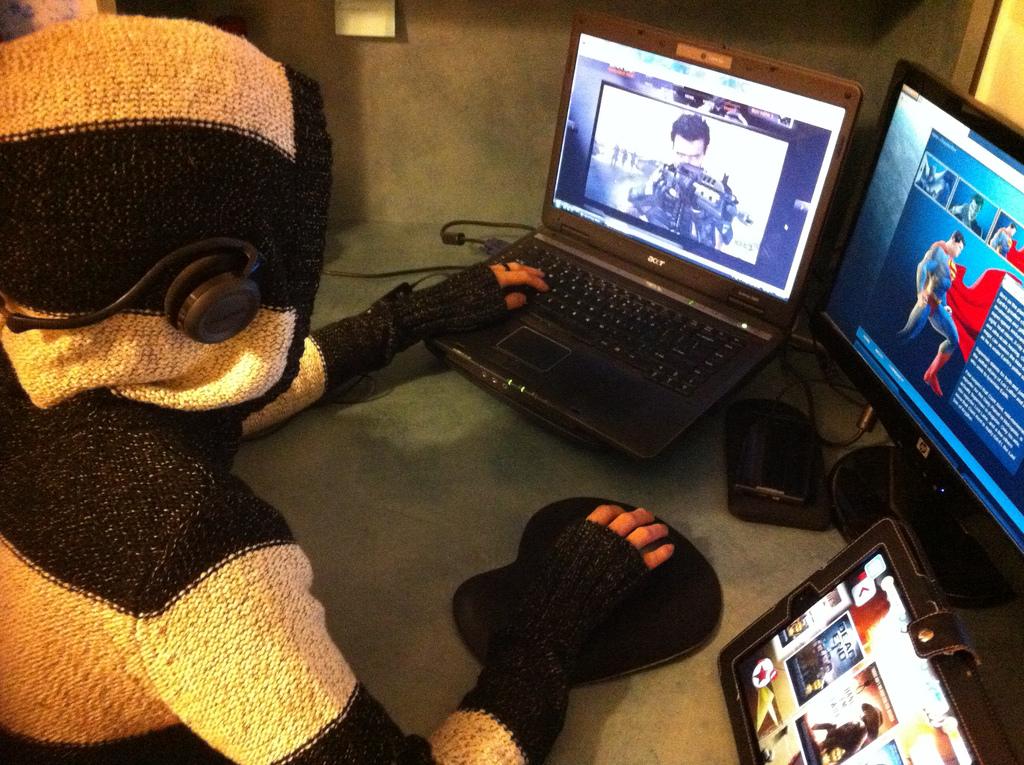Are Females Getting Their Fair Share in the Gaming Industry?
November 28, 2012

If it wasn’t clear long ago that video gaming, as a creative medium and as a form of entertainment, has been a boys’ club for the majority of its lifespan, then the past year has made it common knowledge. Gaming news in 2012 has been a veritable procession of misogyny, with questionable depictions of rape, glorified violence against women, juvenile depictions of the female body and rampant online sexual harassment tirelessly parading the fact. “Boys’ club” is an understatement: video gaming has been more like a tree house atop a towering redwood, with an electric ladder that shocks the hand of any hopeful climber who happens to lack a Y chromosome.
In spite of this, the female gaming population has grown in recent years. This would seem to imply that the clubhouse rules are becoming more lenient, as the gaming industry, along with its market, swells. But as with every multi-billion dollar industry, the story is more complicated than the statistics. Though the female gaming demographic is indeed growing, most games are marketed toward males—and, whether game designers realize it or not, made for males.
Watch 10 minutes’ worth of gaming commercials and trailers on YouTube and you’ll find that the majority of major titles feature heroic male protagonists. “Assassin’s Creed,” “Call of Duty,” “Halo 4″—even the newest four-player installment in the Super Mario franchise, a property with an abundance of female characters, fails to offer players a female avatar. More often than not, female characters within games are sexualized to a varying degree depending on the game’s intended age group and hold little agency within the game’s story; the few instances in which female characters do have agency, they are supporting characters, subordinate to the actions of the male protagonist.
Many of the games that do feature female lead characters are either shallow cooking simulations or games about fashion and makeup. Gaming may have cleared a space for females in recent years, but it’s the same space to which females have been relegated in every other entertainment market; one in which women have to settle for stories that weren’t made for or by them, and in which young girls learn to accept roles of subjugation.
I find it comforting to see that there are parents out there like Mike Hoye who made a particular effort to counteract the negative effects that media can have on a learning child. Hoye grew up gaming. His favorite series was “The Legend of Zelda,” an adventure franchise with a traditionally male protagonist named Link. The eponymous Zelda is not the main character, but the princess who Link ultimately saves in most of the games. In order to teach his three-year-old daughter that girls can be the hero, too, Hoye hacked his copy of Zelda, turning Link into a female.
I grew up with Zelda as well. I remember many an afternoon spent swashbuckling with imaginary skeleton knights on the school playground and pretending the jungle gym was one of the game’s many perilous dungeons. While the other boys and I ran about adventuring, the girls on the playground would play Disney princess and comb each other’s hair.
Back then, there wasn’t a single game on my bedroom shelf with a female hero. You’d have been hard pressed to find one on a store shelf. I was never taught that a girl could save the day. I doubt the notion ever crossed my mind, and I wonder if it occurred to any of those girls on the playground those long afternoons. There are a few fortunate exceptions to this rule today, such as “Portal” and “Mirror’s Edge,” but they are vastly outnumbered by male-led games.
Some internet commentators have responded to Hoye’s gender-bending experiment in a characteristically stubborn fashion, arguing that by changing Link’s gender, Hoye has merely reinforced pre-existing gender roles. I have yet to see any cohesive evidence for these arguments. Others self-righteously claim that they “don’t even take sex into account when playing games,” and that those who criticize the lack of female protagonists in games are simply “making up a problem.” Claiming gender blindness is like saying that there can’t be a homelessness problem because you don’t see any homeless people on your block. Male gamers haven’t been trained to view their preferred entertainment with a critical eye.
Impressionable children are equally lacking in this crucial skill, and without the guidance of media-savvy parents like Hoye, they will unconsciously take the unsaid social rules and systems perpetuated through gaming for granted as they grow up. Girl gamers will learn that a woman is never the hero, but the one who stands back and cheers him on, in stories and in life. Those few strong female protagonists will be exceptions to this rule—but until there are just as many female protagonists as male ones, girl gamers will still be taught that there is a rule, and that they are to play accordingly.









poops • Dec 4, 2012 at 9:13 pm
No girl gamer really care whether the protagonist is a male or female. some games incorporate systems that allows the player to choose the gender(Fable III, Pokemon, Skyrim, Mass Effect, KOTOR). not to mention most MMOs have that option too. only thing that really needs fixing is the culture of gaming where 14 year old hormone filled teenage boys flock to girl gamers whenever girl gamers open their mouth on the mic.